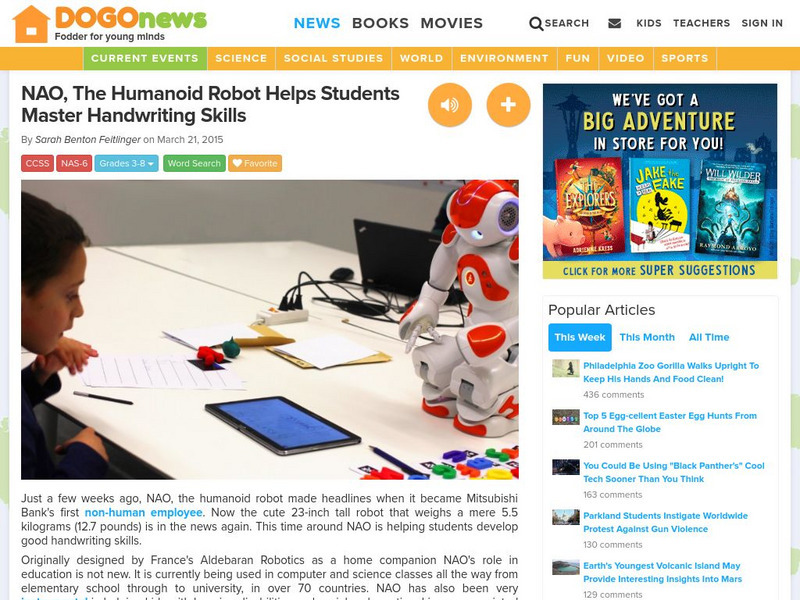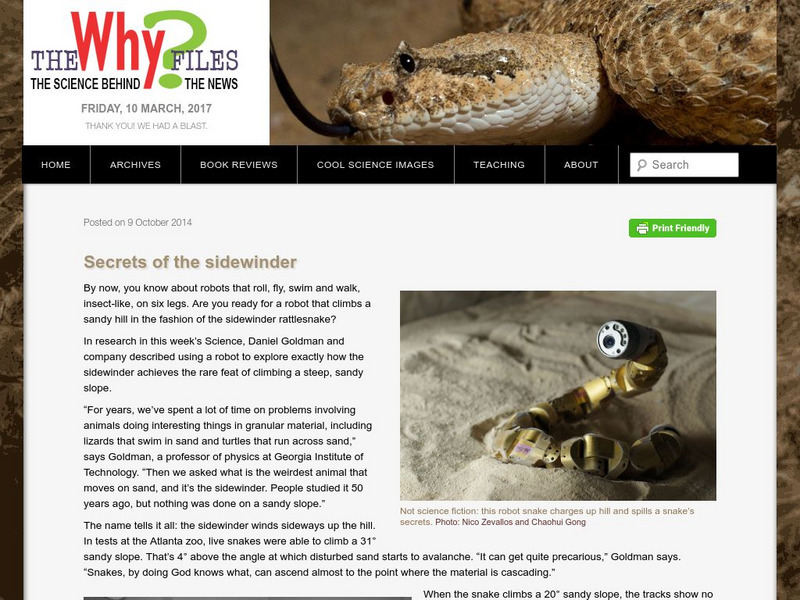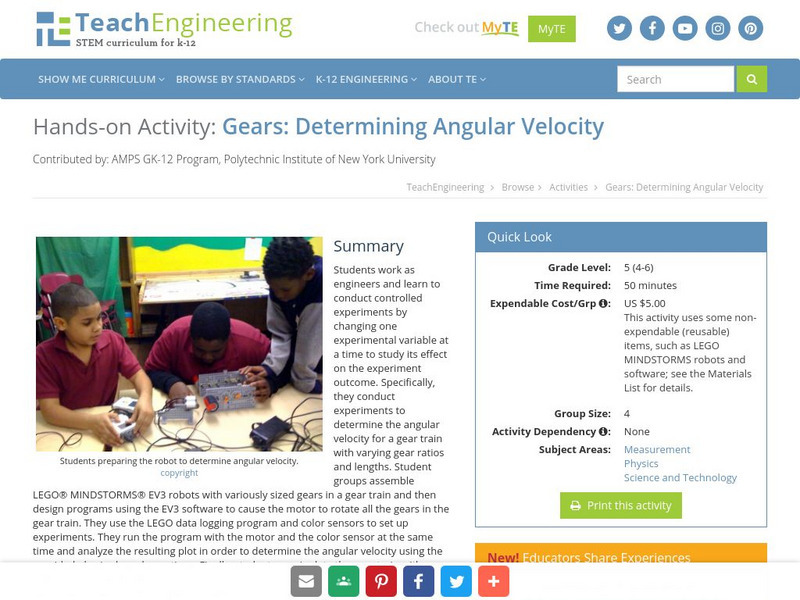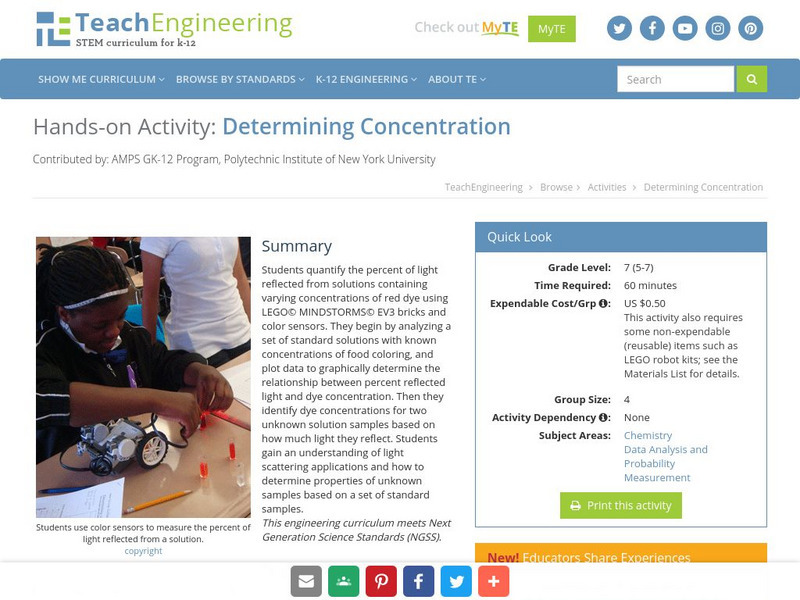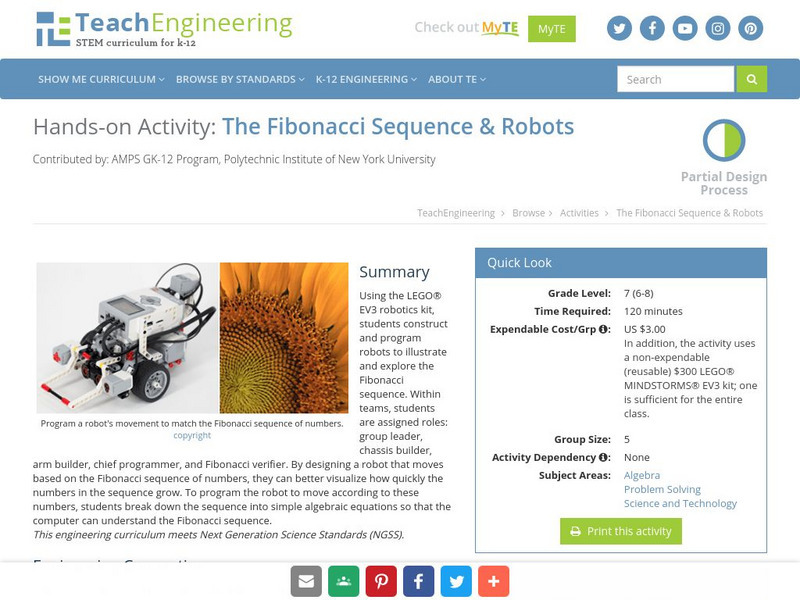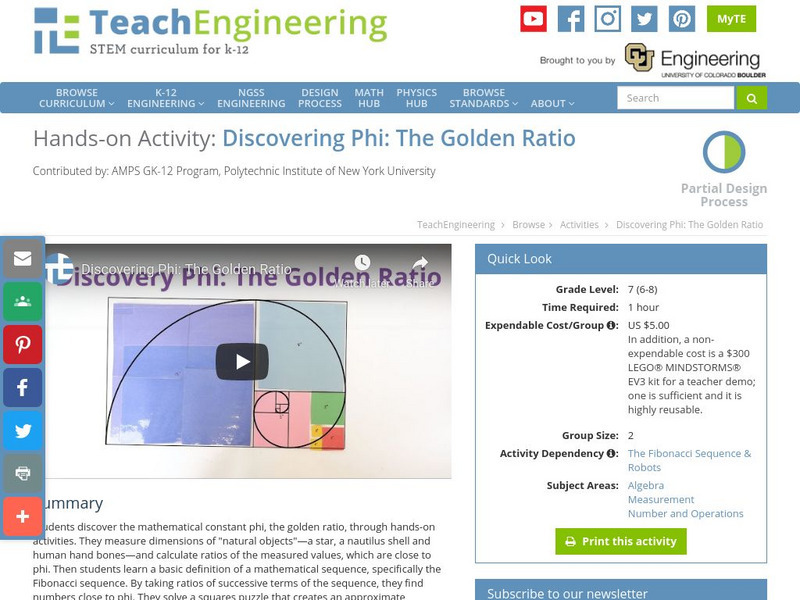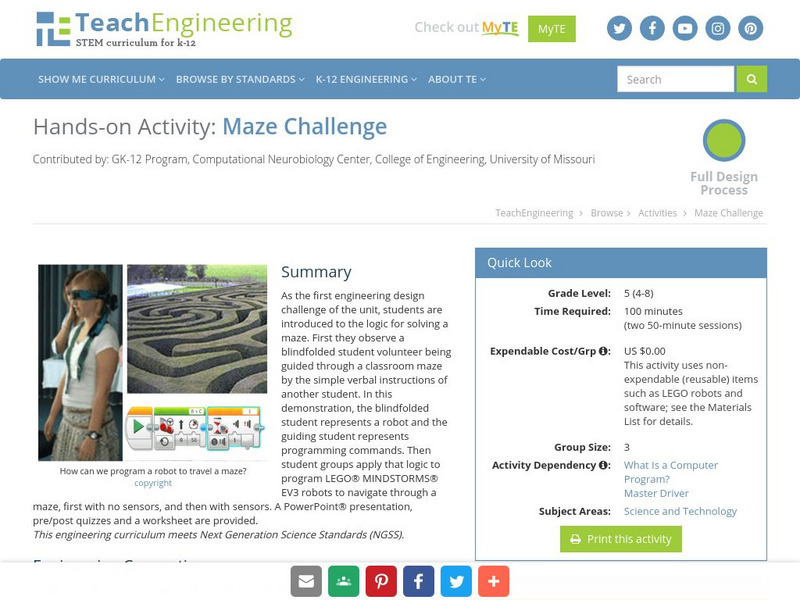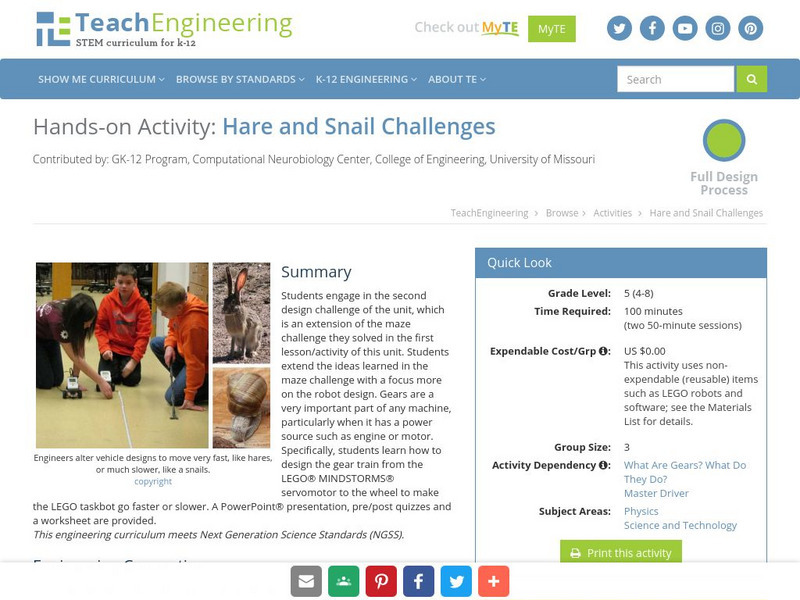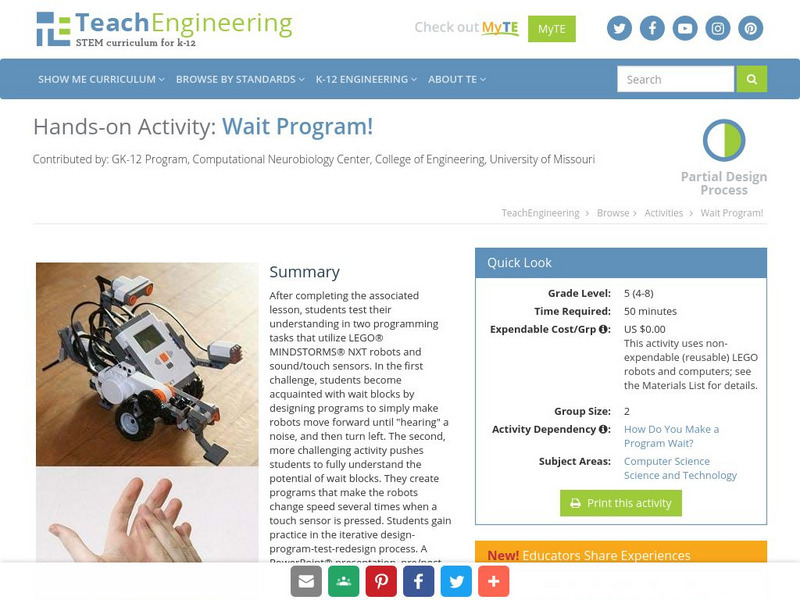Technology Student
Technology Student: Pic Microcontrollers
This site describes how to program and use PIC controllers, which are often used in the robotics field.
Other
Stanford Research Institute: Robotics Demonstrations
Robotics demonstration videos from Stanford Research Institute.
Other
Defense Advanced Research Projects Agency: Autonomous Robotic Manipulation
An outreach program that aims to provide the opportunity to individuals or teams to write software for the ARM robot, test it in simulation, and then upload to the actual system and watch in real-time via the internet as the ARM robot...
Other
Robotc: Thinking About Programming: Programmer & Machine [Pdf]
In this lesson, students learn about the roles of the programmer and the robot, and how the two need to work together in order to accomplish their goal. Students also understand logic behind the robot's actions, and break a big plan down...
The Tech Interactive
The Tech Museum of Innovation: Robot Art
The Tech Museum of Innovation looks at four San Francisco Bay-area artists whose work explores the of art and technology behind the design and operation of robots. Includes many examples of robot art and panoramic views of the artists'...
The Tech Interactive
The Tech Museum: Robotics: Sensing, Thinking, Acting
Robotics was designed to introduce the science behind the design and operation of robots. Through articles and interactive activities, you will learn what a robot is, and the advantages and disadvantages of their use. Includes a...
The Tech Interactive
The Tech: Universal Robots: The History and Workings of Robots
If you think robots are mainly the stuff of space movies, think again. Right now, all over the world, robots are on the move. As they grow tougher, nimbler, and smarter, today's robots are doing more and more things we can't -or don't...
Other
Robotics Online
Robotics Association site containing links to technical papers, educational resources, news, forums and other information.
BBC
Bbc Newsround: Nasa Tests Out New Robot for Mars
Brief article and video report on a humanoid robot NASA is testing for a mission to Mars.
DOGO Media
Dogo News: Robot Helps Students Master Handwriting Skills
Article reports on a humanoid robot that is helping children improve their penmanship. Includes video.
University of Wisconsin
The Why Files: Secrets of the Sidewinder
By now, we know about robots that roll, fly, swim and walk, insect-like, on six legs. But a robot that climbs a sandy hill in the fashion of the sidewinder rattlesnake? What?
TeachEngineering
Teach Engineering: Strong Arm Tactics
Students generally do not know the complexity that goes into building and programming a robotic arm. In actuality, creating such an arm comes from a design that involves mechanical, electrical, and computer science engineers. This...
TeachEngineering
Teach Engineering: Gears: Determining Angular Velocity
Students work as engineers and learn to conduct controlled experiments by changing one experimental variable at a time to study its effect on the experiment outcome. Specifically, they conduct experiments to determine the angular...
TeachEngineering
Teach Engineering: The Car With a Lot of Potential
Working in teams, students perform quantitative observational experiments on the motion of LEGO MINDSTORMS NXT robotic vehicles powered by the stored potential energy of rubber bands. Students understand that through the manipulation of...
TeachEngineering
Teach Engineering: Determining Concentration
Students quantify the percent of light reflected from solutions containing varying concentrations of red dye using LEGO MINDSTORMS NXT bricks and light sensors. They begin by analyzing a set of standard solutions with known...
TeachEngineering
Teach Engineering: The Fibonacci Sequence & Robots
Using the LEGO NXT robotics kit, students construct and program robots to illustrate and explore the Fibonacci sequence. Within teams, students are assigned roles: group leader, chassis builder, arm builder, chief programmer, and...
TeachEngineering
Teach Engineering: Parallel and Intersecting Lines: A Collision Course?
Students act as civil engineers developing safe railways as a way to strengthen their understanding of parallel and intersecting lines. Using pieces of yarn to visually represent line segments, students lay down "train tracks" on a...
TeachEngineering
Teach Engineering: Discovering Phi: The Golden Ratio
Students discover the mathematical constant phi, the golden ratio, through hands-on activities. They measure dimensions of "natural objects"--a star, a nautilus shell and human hand bones--and calculate ratios of the measured values,...
TeachEngineering
Teach Engineering: Maze Challenge
As the first engineering design challenge of the unit, students are introduced to the logic for solving a maze. student groups apply that logic to program LEGO MINDSTORMS NXT robots to navigate through a maze, first with no sensors, and...
TeachEngineering
Teach Engineering: Hare and Snail Challenges
Students extend the ideas learned in the maze challenge in this unit with a focus more on the robot design. They learn how to design the gear train from the LEGO MINDSTORMS NXT servomotor to the wheel to make the LEGO taskbot go faster...
TeachEngineering
Teach Engineering: Sumobot Challenge
Students apply their knowledge of constructing and programming LEGO MINDSTORMS NXT robots to create sumobots- strong robots capable of pushing other robots out of a ring.
TeachEngineering
Teach Engineering: Line Follower Challenge
Student groups are challenged to program robots with light sensors to follow a black line. Learning both the logic and skills behind programming robots for this challenge helps students improve their understanding of how robots work, and...
TeachEngineering
Teach Engineering: Navigating a Maze
Students program LEGO MINDSTORMS NXT robots to go through a maze using movement blocks.
TeachEngineering
Teach Engineering: Wait Program!
After completing an associated lesson, students test their understanding in two programming tasks that utilize LEGO MINDSTORMS NXT robots and sound/touch sensors. Students gain practice in the iterative design-program-test-redesign process.


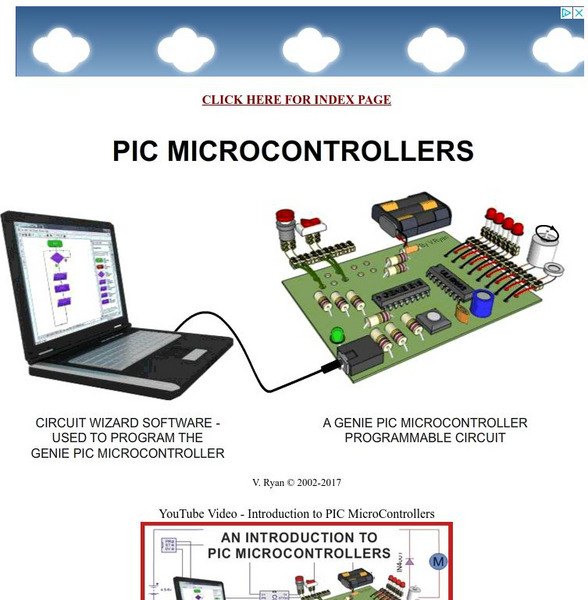


![Robotc: Thinking About Programming: Programmer & Machine [Pdf] Article Robotc: Thinking About Programming: Programmer & Machine [Pdf] Article](https://d15y2dacu3jp90.cloudfront.net/images/attachment_defaults/resource/large/FPO-knovation.png)

